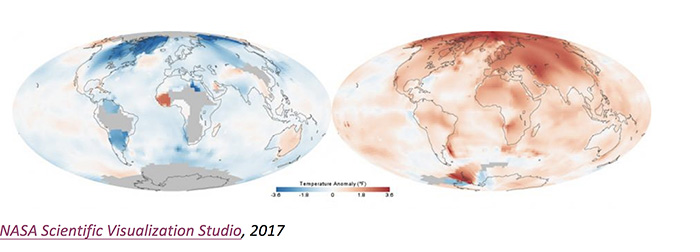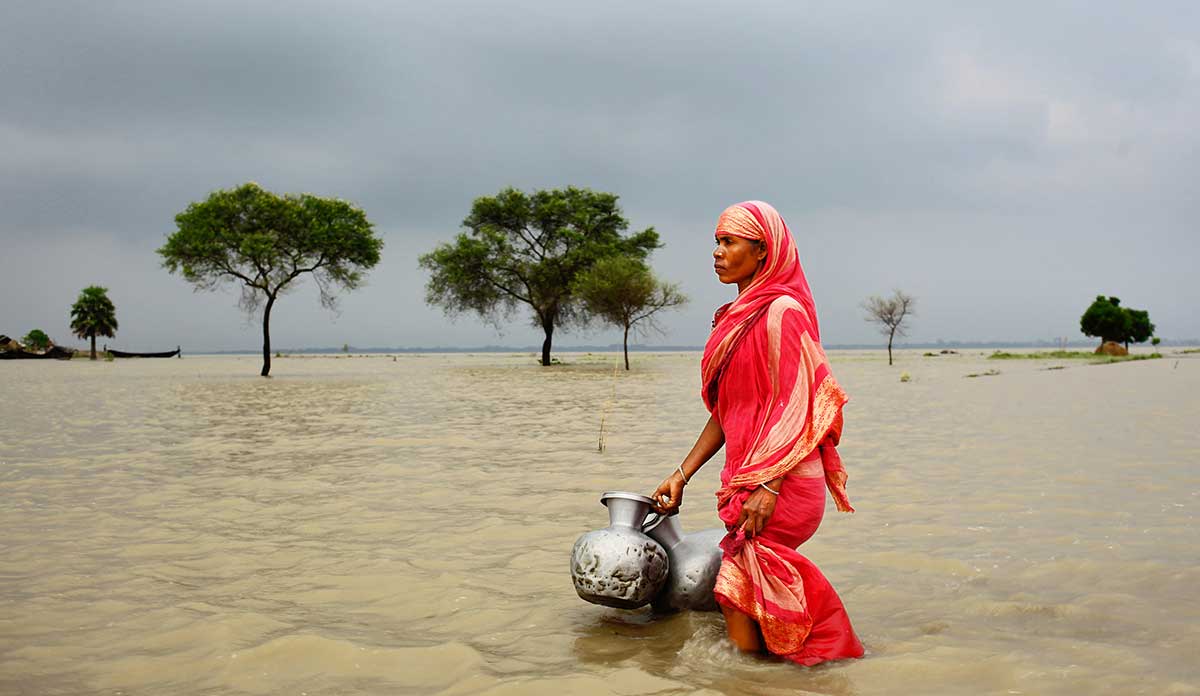In 2015, 3.3% of the global population was displaced, according to data from the United Nations Population Fund. This totals 244 million refugees and internally displaced people around the world. As a comparison, this is the same as approximately two-thirds of the population of the United States. Each year since 2008, 22.5 million people have been displaced by climate-related events. These climate-related events include floods, storms, wildfires, and high temperatures due to climate change.
Climate change as a determinant of health
A sevenfold increase in the global population has increased the amount of greenhouses gases, like carbon dioxide, released into the atmosphere. The United States Environmental Protection Agency (EPA) correlates this surge in greenhouse gas emissions with changing temperatures, increased ocean sea levels and acidity, extreme weather events, and melting glaciers.

In addition, the EPA cites public health as a climate change indicator. In the United States, climate change has impacted the prevalence of Lyme disease and West Nile virus, ragweed pollen season, heat-related morbidity and mortality, and agriculture. Globally, climate change has impacted drinking water, crops, livestock, and food security.
Health outcomes among climate refugees
Also described as ecological or environmental migrants, UNHCR defines climate refugees as “persons displaced in the context of climate change.” Humanitarian agencies struggle to define those displaced by the environment: the term refugee inaccurately describes climate refugees because the majority of these populations are displaced within their home country, not abroad. In Science, Alex de Sherbinin notes the majority of climate refugees will migrate from rural to urban environments. The effects of climate change have displaced people in every region of the globe, and the Global Military Advisory Council sees climate change as a humanitarian crisis.
The Chinese government resettled 329,000 people impacted by climate change in the Ningxia Hui Autonomous Region. The United States Department of Housing and Urban Development (HUD) granted 13 states $1 billion in response to climate refugees. Of the $1 billion, HUD extended $48 million to Isle de Jean Charles, Louisiana, where the Biloxi-Chitimacha-Choctaw tribe lost 98% of its tribal land to the Gulf of Mexico. West Africans pass through Adagez, Niger escaping high temperatures that have endangered subsistence farming as a livelihood, and in Syria, drought has moved one million farmers to urban areas.
A UNHCR report found the primary causes of morbidity and mortality among refugees include measles, diarrheal diseases, acute respiratory infections, malaria, and malnutrition. Health challenges specific to climate refugees are related to a lack of shelter, hygiene, and nutrition.
Laws, policies, and programs for climate refugees
Although there is an abundance of research providing evidence of climate change, as Maggie Thomas recently wrote for Public Health Post, there are gaps in how policymakers respond to the health needs of climate refugees. The United Nations passed the Paris Agreement in 2015 to bolster the global response to climate change. According to UNHCR, the Agreement includes three provisions applicable to climate refugees: (1) the Preamble references climate change and migrants; (2) the Agreement mentions “the protection of people, the resilience of communities, and the importance of livelihoods;” and (3) the Agreement tasks the Warsaw International Mechanism with creating a task force on displacement.
In response, UNHCR coordinates the Advisory Group on Human Mobility and Climate Change, a technical body focused on measures for climate change and human resilience. UNHCR also supports the Platform on Disaster Displacement, which implements the Nansen Initiative Protection Agenda. This agenda provides recommendations for protecting climate refugees.
However, Somini Sengupta emphasizes how the Paris Agreement fails climate refugees because the accord will not be expanded to specifically address those displaced by the environment. If the global public health community seeks to mitigate poor health outcomes among climate refugees, then it must advocate for continued research and strengthened laws, policies, and programs. This depends on journalists, policymakers, and academics understanding the relationship between environmental health and displaced populations.
Feature image: Since the deep tube well has flooded in her village of Khanpur, Rajshahi, Bangladesh, climate victim Rahima Khatun (49) walks to another village to retrieve fresh drinking water. © 2013 Sumon Yusuf, Courtesy of Photoshare














